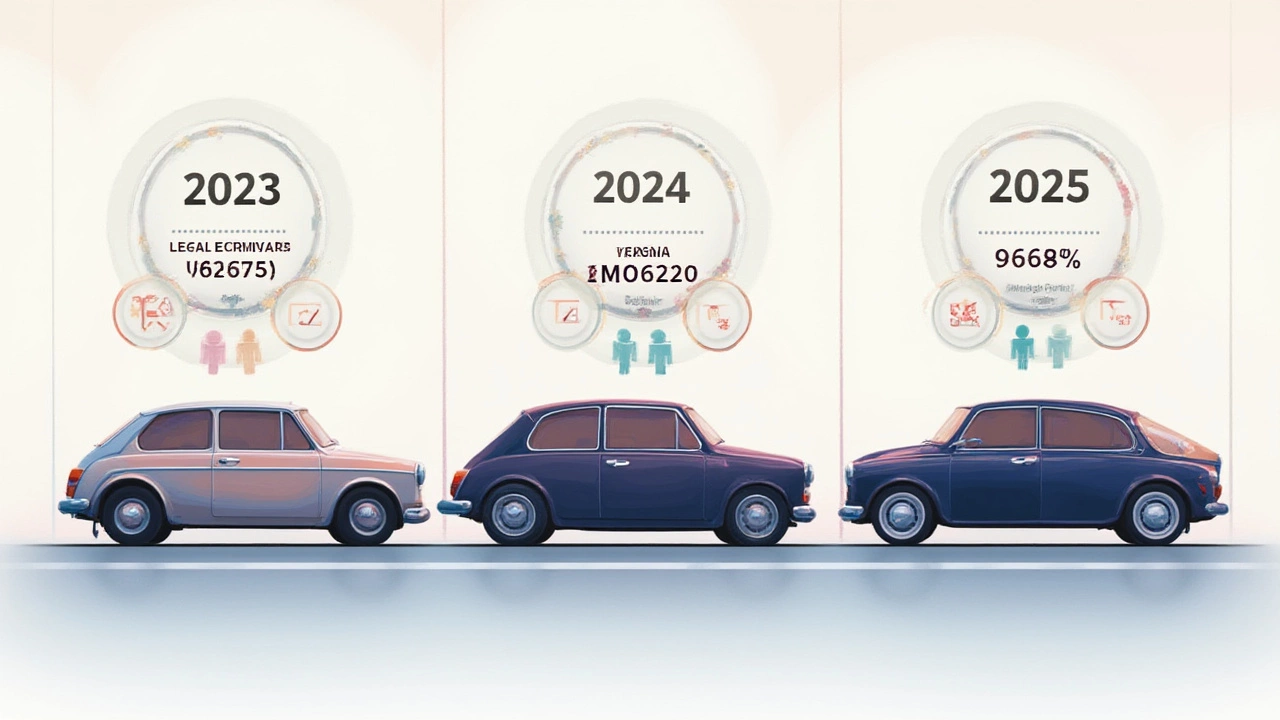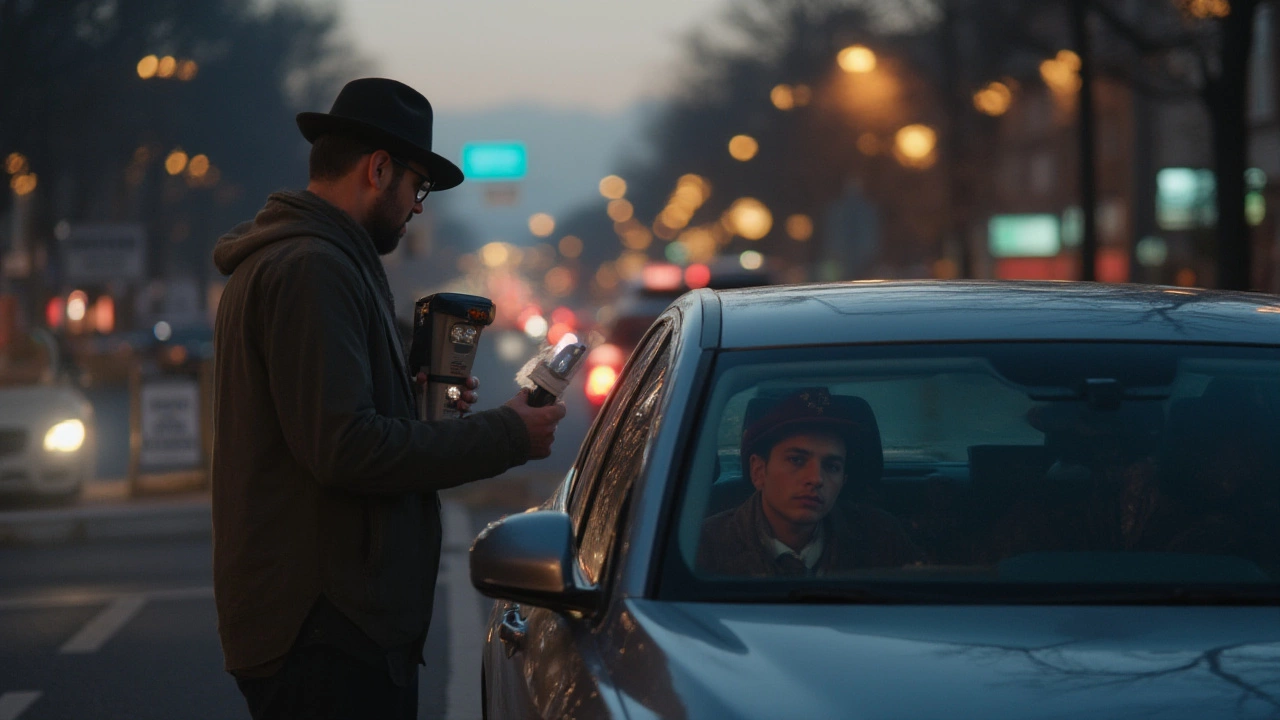Push your driver’s seat back and take a look around the parking lot—nearly every car has a different shade of window tint. Some folks put it on for the cool factor, some want privacy, and others just want relief from the relentless Virginia sun. But here’s the kicker: more than a few drivers don’t actually know what tint is legal in Virginia or that the rules change depending on where your windows are. Get it wrong, and you might be making friends with a ticket-wielding cop. There's no shortage of myths and half-truths about tinting around here, so let's clear the haze and talk about what’s legal—right down to the numbers, the fines, and all those odd exceptions that could save you big headaches.
How Dark Can You Go? Virginia’s Window Tint Law Numbers
Think of window tint like sunglasses for your car, but with strict rules on how dark those lenses can be. The main thing you’ll hear about is VLT—visible light transmission. VLT is the percentage of light that passes through both the glass and the tint film. The lower the number, the darker it is. In Virginia, this number decides what’s legal and what isn’t. Here’s how it breaks down for private passenger vehicles:
- Front side windows: At least 50% VLT, meaning half the light must pass through. Anything darker is a violation.
- Rear side windows: At least 35% VLT. You can go darker in the back than in the front, a common trick for families who want extra sun protection for kids.
- Rear window (back glass): 35% VLT or lighter. Classic look, but still needs to let in over a third of natural light.
- Windshield: Here’s where folks get tripped up—a non-reflective tint is only allowed above the AS-1 line (that’s the little marking about 3-6 inches from the top of most windscreens). Forget going full limo-style on your windshield. No tint below that line, period.
One thing hardly anyone mentions: SUVs and vans are treated differently in the rear side and back windows. If your car is classified as a multi-purpose vehicle (read: big SUV, minivan, or truck), there’s a lot more flexibility in the rear side and rear windows—you can pretty much go as dark as you want in the back. But the front side rules don’t budge, no matter the vehicle. If you use one shade of tint on every window, you’re likely violating the law on at least the front ones. Knowing your car’s classification is smart before you tint.
This isn’t just about the law playing killjoy. The aim? Cops want to see your hands in a traffic stop, and everybody from eye doctors to insurance companies has lobbied to keep the visibility fairly high for safety.
| Window | Private Cars | SUVs / Trucks (Rear/Back) |
|---|---|---|
| Front Side | 50% VLT | 50% VLT |
| Rear Side | 35% VLT | Any darkness |
| Rear Window | 35% VLT | Any darkness |
| Windshield | AS-1 line only* | AS-1 line only* |
*Non-reflective tint above the manufacturer’s AS-1 line only
There’s no room for negotiation when you’re stopped—if your tint comes up short while testing with a cop’s meter, you get cited. That’s why shops in Virginia are supposed to hand out a little sticker that says your tint is legal. Still, if you’re buying a used car or find yourself pulled over in another state, it’s not much use unless you double-check those VLT figures. Some DIY kits sold online or at big-box stores claim they’re “legal” but don’t always match Virginia guidelines, so be extra careful.
Now, about reflection—mirrored or metallic tints are a fast ticket to trouble. Virginia bans any mirror-like coatings. Your glass can’t have a reflective look that’s more than what came with the original window from the factory.

Tint Tickets, Fines, and Surprising Exceptions
If you think getting nailed for illegal tint isn’t a big deal, check out the numbers on those fines. Slip past the law by even a few percentage points and you’ll pay for it, sometimes right on the roadside. Last year, the typical fine in Virginia for illegal window tint started at $110, but locals report fines can stretch to over $200 after court costs or repeat violations. If you get busted in a school zone or while driving a commercial vehicle, expect those fines to spike higher.
Here’s where it gets messier: Virginia classifies illegal tint as a “secondary offense.” That means law enforcement can’t pull you over just for excessive tint unless they spot another violation (like speeding or a busted taillight). But once you’re stopped, they’re allowed (and likely) to use a device called a photometer to check your glass. You can’t appeal the reading if it comes up short—it's treated as fact in court. Repeat offenders? Expect points on your license and higher insurance rates. Some insurance adjusters knock up annual premiums for cars with prior tint tickets, especially if the car’s from a private sale or has been modified.
As for exceptions, let’s talk about medical exemptions, because Virginia is one of the few states that issues waivers for tint. If you’ve got a genuine need, like a skin condition (for example, lupus or porphyria, which might sound rare but are real medical diagnoses), you can neatly sidestep the window tint limits—after jumping through some paperwork. You need a signed doctor’s note and to apply through the DMV, and Virginia tends to approve these only for strong medical causes.
- Application must include valid medical proof and the DMV’s proper form
- If approved, the medical waiver allows front side windows to be as low as 35% VLT, instead of 50%
- This waiver must be renewed every two years, and you have to keep the official approval paper in the vehicle at all times. Miss it? You’re back to square one, legally speaking.
An interesting tidbit: professional drivers (such as limo services) are allowed a bit more flexibility on rear tint, and law enforcement can also run slightly lower VLT due to upfitting with special equipment. Farmers or folks with classic cars sometimes ask for exceptions, but Virginia rarely grants them outside medical. And while you’re at it, don’t forget that other states ignore your Virginia sticker. If you head into DC or Maryland, expect to meet their standards—which are different and sometimes stricter—so if you regularly travel across borders, ask your tint shop about going with a 50% VLT all around to stay safe.

Tips for Staying Legal and Choosing the Right Tint for Your Ride
Let’s face it, most folks want the darkest tint their state allows without actually getting a ticket. So how do you stay on the right side of Virginia law? First step: skip the budget DIY and have your tint done by a professional who knows Virginia’s current rules. Licensed tint shops typically install only legal film and give you a sticker or a certificate showing your car’s VLT numbers—the sticker goes in the driver’s side door jamb or window. If you resell the car, hang onto that paperwork or pass it onto the new owner. Here’s a checklist before booking your appointment (and a few things nobody tells you):
- Ask the installer for the exact VLT percentage after installation—don’t rely on a “close enough” guess, especially since aftermarket film can fade or lighten over time.
- If you’re near the border or ever park in DC or Maryland, consider going lighter than Virginia’s maximum allowed, just to avoid cross-state hassles.
- Check your local weather—folks in southern VA with lots of sun may want a ceramic tint rather than standard dyed or metallic, since it blocks heat better and can be lighter while still cutting glare.
- Remember that police occasionally do tint sweeps (especially near schools or in heavily trafficked areas), so if your tint looks obviously darker than most cars around you, it’s only a matter of time before you get checked.
- If you ever get cited, most courts will drop the ticket if you remove the illegal tint and have the car checked by a state inspector before your court date.
- Cab drivers, gig workers (think rideshare), and delivery drivers should keep their factory glass or go as close to legal as possible, since company insurers will almost always blame accidents on visibility issues if you have illegal tint.
- If your factory glass is already tinted (many new cars come with mild tint from the factory, especially SUVs and minivans), adding film drops the VLT number lower than you think. Combining a 70% film with 15% factory tint, for example, often lands you below legal numbers—even if the film itself is above 50%.
- Veterans might qualify for medical waivers if they have eye impairments—this is rarely mentioned but worth asking the VA about if you’ve got light-sensitive vision injuries.
Finally, always keep your windows squeaky clean. Dirty windows not only look worse, but heavy grime can interfere with VLT readings if you’re pulled over. Avoid using anything with ammonia, since it degrades expensive tint. Stick with mild dish soap and soft cloths. If you have to replace a window after a break-in or accident, always recheck your new glass for legal VLT. Applying tint in Virginia isn’t rocket science, but it’s not wild west territory, either. There’s a sweet spot: pick legal film, get it installed by someone who knows what they’re doing, and keep the paperwork handy in your glovebox. Being smart about your tint keeps money in your pocket, your car cooler, and spare you the “just one more thing” lecture when you’re already running late. Never underestimate a traffic cop’s enthusiasm for testing window tint, especially in the heat of July.